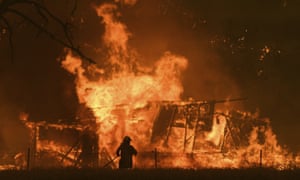Join me, if you will, on an early morning walk through the streets of Shepparton.
This will be shorter than usual, but still equally interesting and we will get to meet some local heroes, well, not meet them, but see them.
Just for the day will be flâneurs, that’s French for someone who saunters around observing society, but we won’t sauntering, we’ll be walking, although still observing.
To make it easy, we’ll meet at the Caltex service station in Archer St and remember it’s early morning, probably cold and the sun hasn’t cracked the horizon yet.
We’ll head north and almost immediately we are passing what was Karibok Park where for years the small sports oval was used for cricket, soccer and occasionally, illegally for golf practice.
And of course things have changed.
The Karibok Park sign is gone and behind the pole on which it once hung is the partly built $10 million new Shepparton fire station.
Walkers once had to keep and eye out for a fast moving cricket ball driven by an enthusiastic batsman which has eluded all the fielders or an errant soccer ball, but now it is tradies, trucks or some sort of excavation.
And here we see our first local heroes as although not yet daylight, some of the tradies are all ready busy setting up for the day, rugged up against the cold, and yet some are wearing shorts.
We cross the nearby Woolworths car park and we encounter another hero, a company employee armed with a mechanical claw picking up discarded bits and pieces. It’s cold, but she keeps warm as she enthusiastically scouts the area for rubbish.
Let head around past the SPC factory and again we see a whole bunch of our heroes filing in for a day putting the stuff we produce on our farms into cans.
Into Andrew Fairley Avenue a place where a few years ago a whole bunch heroes took to the street to successfully protest plans to close what they considered to be, and is, an important thoroughfare.
Then we walk around the corner into Hawdon St to be ambushed by controversy - here the old Shepparton High School is being demolished to make way for the new Greater Shepparton Secondary College.
One fellow helping with the demolition of old multi-story building next to the original part of Shepparton High School thought the idea of combining all the schools in one site sounded good,
although he was unaware of social disruption the new school had brought down upon the city.
Again, more heroes, knee deep in rubble mostly unaware the some in the city are equally deep in robust discussion about the rights and wrongs of what will be a whole new way of educating our kids.
Then we head past the partly completed new GV Connect building in Bowenhall St.
The multi-storey commercial-like building seems a little out of place in what is a residential area, but the centre has operated there for many years and it has always be quite comfortable in the neighbourhood. That place is packed with heroes.
We head down Knight St and and the revamped and freshened Notre Dame College is on one side and on the other St Brendan’s Catholic Church behind a fence; a fence that became one of Victoria’s “loud fences” acknowledging the heroes who had survived institutional abuse.
Pressing on, next we pass the Maude St site of the new Ace College and although it is still quite dark a cement delivery truck is perched on the footpath, ready to unload just as soon as the tradies are ready to go - more heroes, it’s cold, some are in shorts and hard hats, which appears to be a contradictory combination.
Let’s keep going, down Fryers St, through Monash Park, but as you pass and over to your right is a monument to our heroes from Australia’s many conflicts; through the colourful underpass between the park and the shared path that leads to Victoria Park Lake, simply an heroic place.
Daily walks take me past it most days and soon it will be even grander and richer place with the completion of the new Shepparton Arts Museum.
Art itself is another of our heroes as it is at the root of the renaissance of our lives and it only seems right that we celebrate in such a magnificent way in such a wonderful place.
Let’s head home, checking as we go the pedestrian path at the High St rail crossing where someone, frustrated they were being directed by a purpose built fence had kicked part of it down only to see their efforts denied by some good soul who had reassembled it with coat hanger wire.






